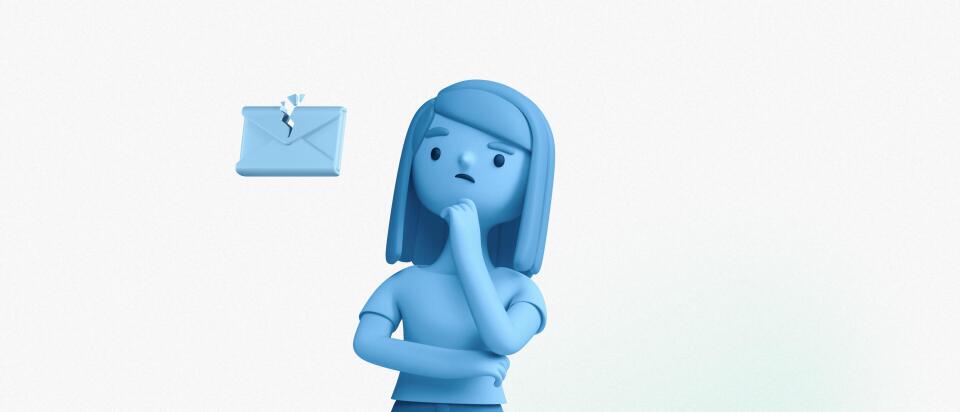
For a long time, email marketing was considered the most efficient and cost-effective way to attract participants to events. With an impressive ROI of 4,400%, it remains unbeatable in terms of affordability, effectiveness, and speed. However, the reality has changed: overcrowded inboxes, declining open rates, and strict data protection regulations present new challenges for event managers.
Event professionals are caught in a dilemma: on the one hand, email remains indispensable; on the other hand, it is increasingly difficult to get noticed in recipients’ inboxes. How can we leverage the strengths of this medium without getting lost in the clutter? This was the focus of discussion at the second edition of the "Event:Held:innen" (translated as Event Heroes) series.
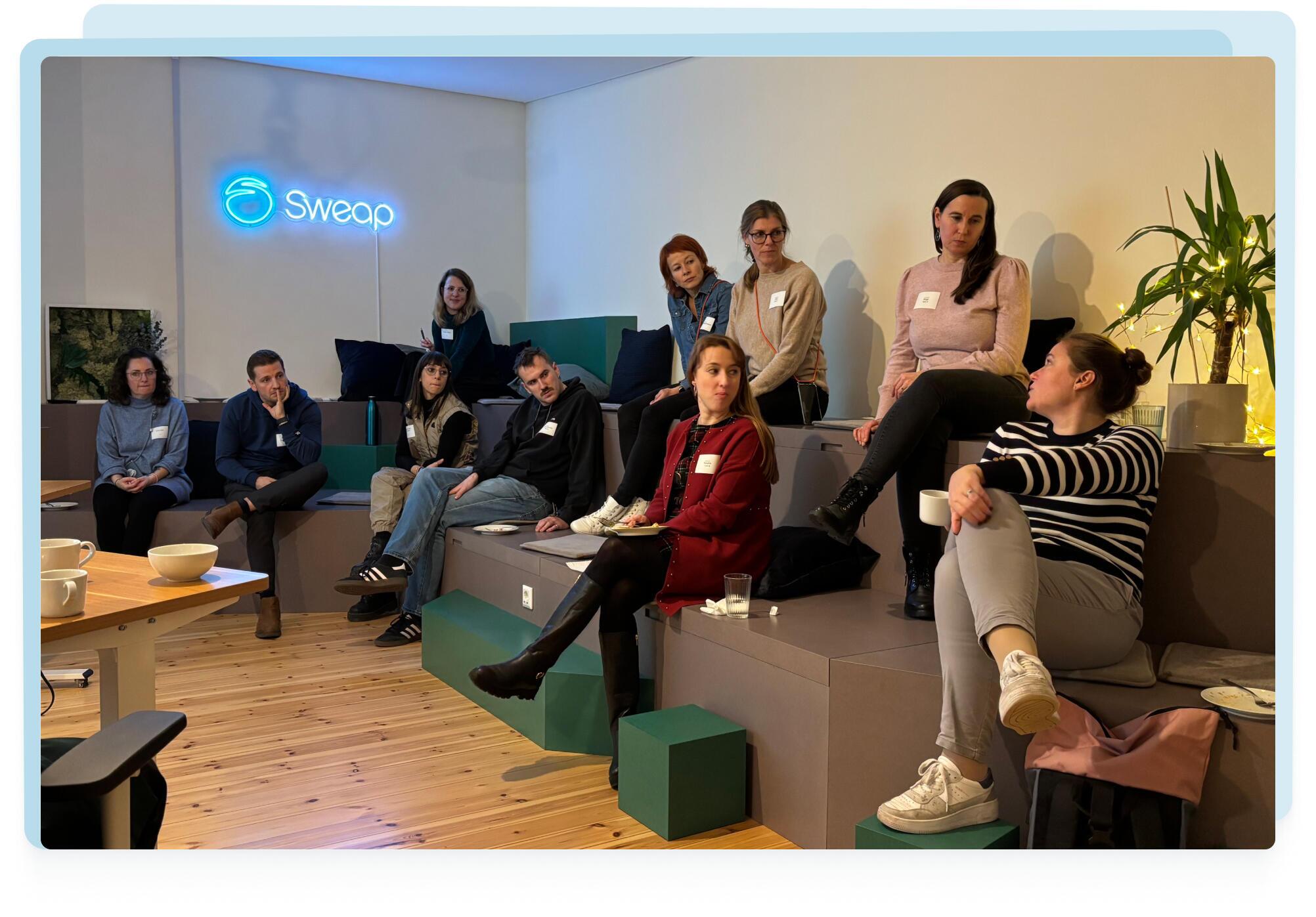
For two hours, we discussed e-mail marketing in a relaxed atmosphere.
The Key Challenges and Solutions in Event Email Marketing
Our Event Heroes had the opportunity to submit their challenges before the event, and additional concerns were raised during the open discussion
Declining Open Rates and Spam Filters
Declining open rates are among the biggest challenges in event marketing. Even well-crafted event invitations often fail to capture recipients' attention - or they end up in the spam folder. Spam filters are becoming stricter, and overcrowded inboxes exacerbate the problem. The result? Frustration among event professionals and empty seats at events.
During the discussion at the second Event:Held:innen session, it became clear that the solution lies not only in the design of the email but in a holistic strategy. Maintaining a clean guest list plays a crucial role: regularly removing inactive contacts, collecting clean data, and implementing authentication protocols such as SPF, DKIM, and DMARC can help improve deliverability.
The content of the email also matters: invitations should be personal and clearly formulated - without sensationalist language or unnecessary links that might trigger spam filters. The key takeaway? Quality over quantity. Emails that specifically address recipients' interests have the best chance of making it through the digital inbox barrier.
The Overcrowded Inbox: A Challenge for Event Managers
Most recipients' inboxes resemble a chaotic marketplace: countless messages compete for attention, and many emails go unread. Event invitations, in particular, struggle to stand out against newsletters, promotional messages, and personal correspondence. Additionally, email fatigue is growing - the more messages someone receives, the less likely they are to open or engage with them. For event managers, this makes it increasingly difficult to convey the relevance of their invitations and reach their target audience.
The Event-Held:innen discussion revealed that there is no single solution; instead, a combination of strategies is required:
Audience Segmentation: Creating smaller, targeted mailing lists is one of the most effective measures. The more tailored an email is to recipients' interests, the more likely they are to open it. Surveys and feedback from past events can help understand topics and preferences better.
Personalization: Personalized greetings make a difference. An email with a customized subject line - whether featuring the recipient’s name or a specific interest - is more likely to be noticed. A personalized touch in the email body can also increase engagement.
Compelling Subject Lines: Creativity pays off. Using urgency with clear time indications, emojis for visual appeal, or A/B testing different variations are all ways to optimize subject lines.
Visual Teasers: Email design also plays a role. Interactive elements like GIFs or countdown timers highlighting an upcoming event can spark recipients' curiosity.
The key takeaway? The overcrowded inbox is a problem that event managers alone cannot solve - but by crafting personalized, strategically planned, and visually appealing emails, they can reclaim their space in recipients’ inboxes.
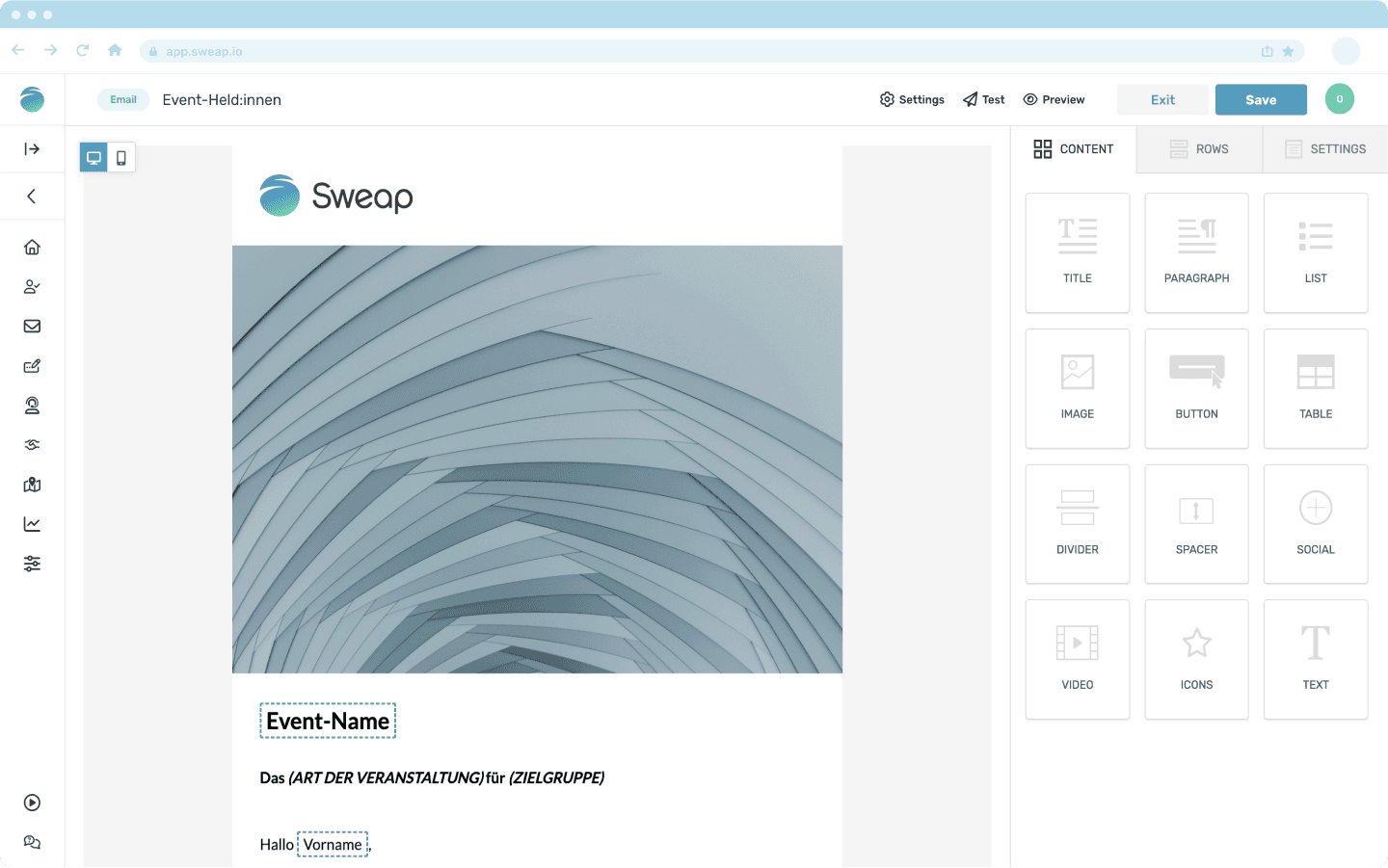
The solution for beautiful email design: the new email builder in Sweap
Audience Segmentation as a Success Factor
Segmentation was already mentioned as a solution for overcrowded inboxes - and for good reason. It was one of the central themes of the Event Heroes discussion. Segmentation is not just a tool; it is a critical success factor for effective email marketing. It enables event marketers to send the right message to the right people at the right time.
How does this work in practice?
Precision Over Mass: Instead of sending generic invitations to a broad audience, emails should be directed at smaller, interest-based segments. The discussion revealed that smaller lists often achieve higher registration rates simply because the content is more relevant.
Data Maintenance as a Foundation: Segmentation only works if the data is accurate. It was emphasized that the entire team - from sales to customer service - should collaborate to build interest profiles in the CRM. These data points enable the event team to filter more effectively and create personalized content.
Audience Analysis: Segmentation should be based on clear personas. Returning attendees, new customers, or partners have different needs that can be addressed with tailored messages.
Identifying Interests: Surveys, past interactions, or feedback from previous events can help determine attendees' interests. Knowing what the target audience truly cares about provides a significant advantage.
The discussion concluded that segmentation requires time and a clean data foundation - but the investment pays off. It not only improves registration rates but also builds trust and relevance with the audience. A targeted approach always outperforms mass communication.
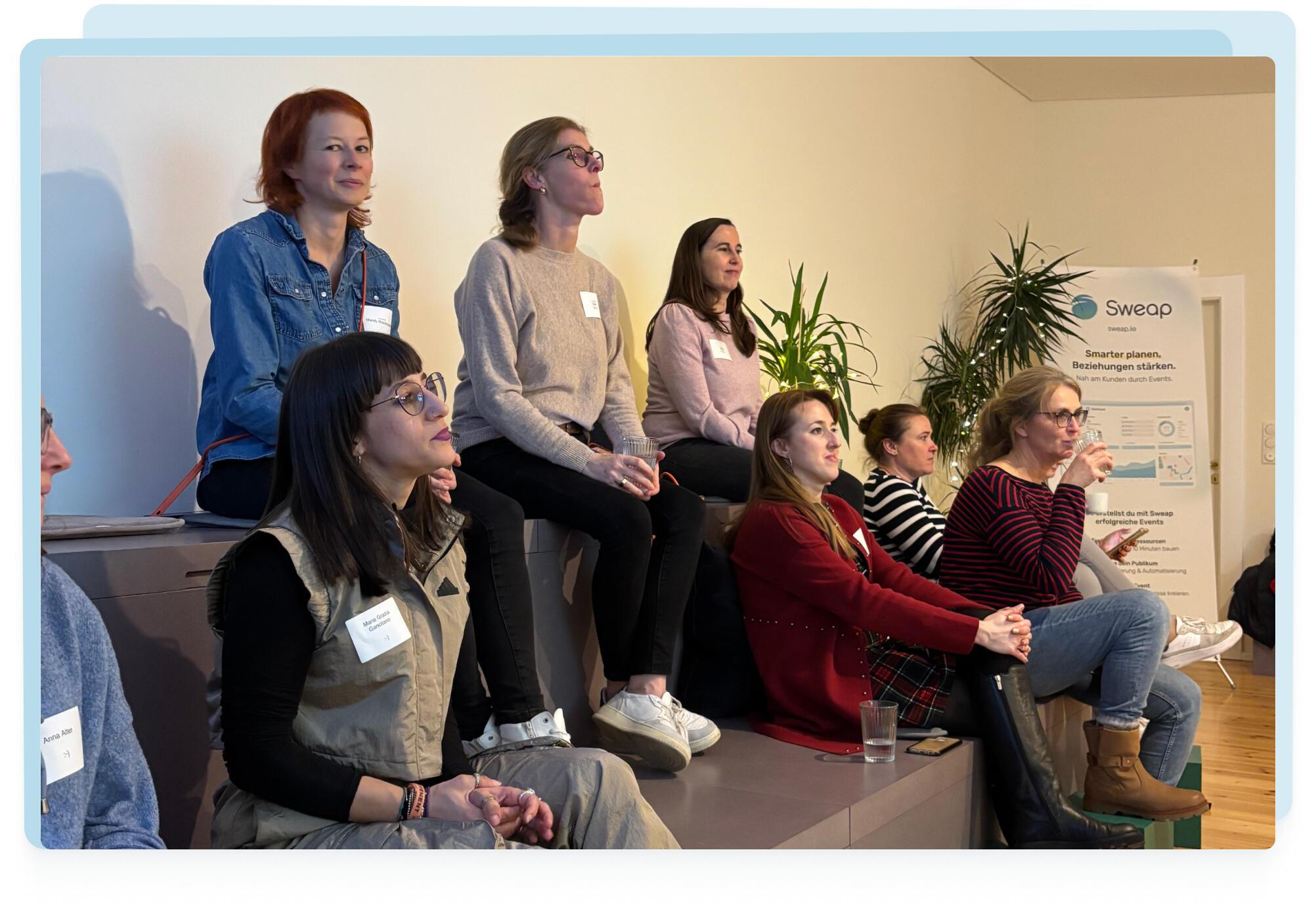
Data protection and its Hurdles
For many event managers, data protection is not just a hurdle, but a constant challenge. Strict regulations such as the GDPR limit the possibilities for storing the interests of the target group or using personal data for marketing purposes. For many companies, this means that data that is not considered ‘essential’ may not be collected or used. But it is precisely this information – such as interests or preferences – that is essential for targeted email marketing.
The discussion at the event showed that data protection can be seen not only as a barrier, but also as an opportunity. Transparency in the way data is handled creates trust and can strengthen the relationship with the recipient in the long term.
Possible solutions from the discussion:
Clearly communicate the purpose: Transparency in how data is collected and clear information about how the data will be used increases trust. Recipients should know that their information is being used securely and meaningfully.
Minimal data collection: Sometimes less is more. Instead of collecting a wide range of information, only the data that is really relevant for the invitation and personalisation should be requested.
Understanding data as a service: Data can be used to add value for the target group. A personalised experience, based on the stated interests, shows the recipient that their data is being put to good use.
Data protection in practice: Companies can actively involve recipients by offering them options. For example: ‘Tell us which events you are interested in.’ This way, data collection is perceived as a service and not as a constraint.
The key takeaway was that data privacy isn't going away, so we need to learn to embrace it as an integral part of our email marketing strategies. Building trust comes from clear communication and a willingness to collect only what's necessary.
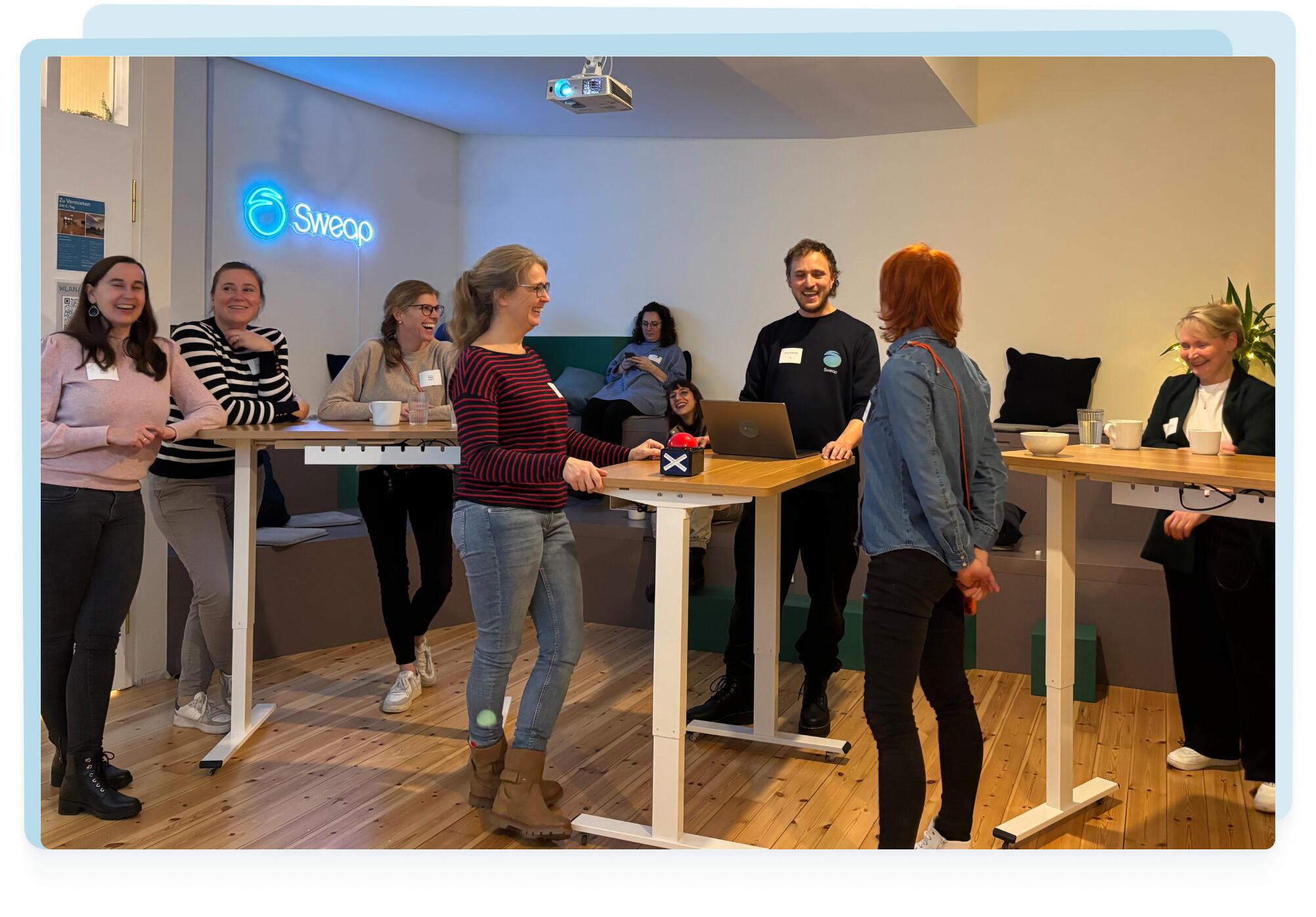
The Event-Held:innen are always ready for a bit of fun too.
Event Management Software as the First Step Toward More Effective Event Marketing
In recent years, event marketing has increasingly moved into the spotlight, prompting the industry to market its events in a more targeted and personalized way. However, the shift toward more efficient event marketing requires more than just a change in mindset - it also demands reliable technological solutions.
Event management software like Sweap can make a crucial contribution here. By digitizing many processes - such as invitation management and participant data collection - resources can be saved, and target audiences can be segmented more effectively.
Looking Ahead: The Future of Email Marketing
The future of email marketing lies in personalization—this was a central theme in the discussion among the Event Heroes. But how can personalization be scaled? Artificial Intelligence offers exciting possibilities that go far beyond simply inserting a name in the subject line.
One intriguing idea that emerged in the discussion was this: Will AI soon be reading our emails for us? Instead of manually scrolling through an overflowing inbox, a device’s AI could filter and sort messages by importance—ensuring that only truly relevant content reaches the recipient. For event managers, this means only well-thought-out, personalized emails with real value will get noticed at all.
Another approach discussed was tailoring emails to the AI of the receiving device. Content and send times could then be adapted to recipients’ habits, based on data such as past open times or interactions. One participant summed it up perfectly: “I get my content exactly when I usually open it.”
However, an interesting counterpoint was also raised: Will we return to traditional methods like postal invitations? In a world increasingly flooded with digital channels, analog approaches—like handwritten invitations or postcards - could serve as a refreshing alternative that signals attention and appreciation. Of course, this wouldn’t necessarily align with efforts toward greater event sustainability.
Conclusion: Email Is Here to Stay - But We Need to Rethink It
Email marketing for events faces major challenges: overflowing inboxes, declining open rates, and strict data protection regulations make it harder for event managers to reach their target audience. Still, email remains an indispensable and incredibly effective channel, if used correctly.
The discussions at the second edition of the Event Heroes showed that this is not the end of the email era, but we do need to adjust our approach. Fewer, but more targeted and personalized emails that cater to recipients’ interests are the key to success.
New technologies like AI can help make emails smarter and more relevant. At the same time, event managers should remain open to alternative approaches, such as event newsletters or even postal invitations.
Email is here to stay - but it demands a more thoughtful approach. With a smart strategy, it can continue to be a powerful part of event communication.
Want to join the next Event Heroes gathering in Berlin? Sign up for the waitlist here, and we’ll keep you informed about upcoming events.

